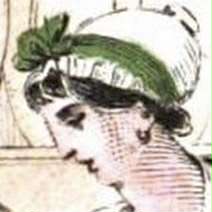
d: 1809
Mary Bateman
Summary
Name:
Mary BatemanNickname:
The Yorkshire WitchYears Active:
1780 - 1806Status:
ExecutedClass:
MurdererVictims:
1Method:
PoisoningDeath:
March 20, 1809Nationality:
United Kingdom
d: 1809
Mary Bateman
Summary: Murderer
Name:
Mary BatemanNickname:
The Yorkshire WitchStatus:
ExecutedVictims:
1Method:
PoisoningNationality:
United KingdomDeath:
March 20, 1809Years Active:
1780 - 1806bio
Mary Bateman, born Mary Harker in 1768 in the village of Asenby, North Yorkshire, was one of England’s most infamous early 19th-century female criminals. The daughter of a farmer, she was literate — unusual for a woman of her class — and began work as a domestic servant at 13. Bateman’s life of crime started early. At around age 20, she moved to York to work as a dressmaker but soon fled to Leeds following involvement in a burglary. Over the next decade, she built a reputation not only as a skilled mantua maker but also as a “wise woman,” fortune-teller, and self-proclaimed witch.
Bateman married John Bateman, a wheelwright, in 1792. Their marriage, however, did little to curb her criminal activity. She committed numerous thefts, posed as a healer, and repeatedly escaped imprisonment by bribing witnesses. Her scams often targeted the vulnerable, including the sick and superstitious, and she occasionally exploited disasters for personal gain — once soliciting donations for fire victims and keeping the proceeds for herself. Reports from the period also accuse her of performing illegal abortions.
By 1806, Bateman became involved with the followers of Joanna Southcott, a self-proclaimed prophetess, and used the growing religious fervor to her advantage. She orchestrated one of her most notorious frauds — the “Prophet Hen of Leeds” hoax — in which she inscribed prophetic messages such as “Christ is coming” on eggs and reinserted them into a hen to convince locals of divine signs. Visitors paid to view the eggs, enriching Bateman and strengthening her reputation as a mystic.
murder story
In 1806, William and Rebecca Perigo sought Mary's assistance due to Rebecca's chest pains, believing they were the result of a curse. Mary prescribed special puddings, secretly laced with poison, which Rebecca consumed over several months. Rebecca's health deteriorated, leading to her death in May 1806. Mary continued to extract money from William under the pretense of providing protective charms.
In October 1808, upon realizing the deceit, William reported Mary to the authorities. A search of her home uncovered poison and belongings of her victims, leading to her arrest. Mary was tried in York in March 1809, found guilty of murder and fraud, and sentenced to death. She was executed by hanging on March 20, 1809. Her body was later displayed publicly, with strips of her skin tanned and sold as charms to ward off evil spirits.